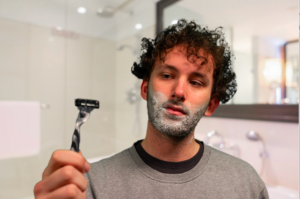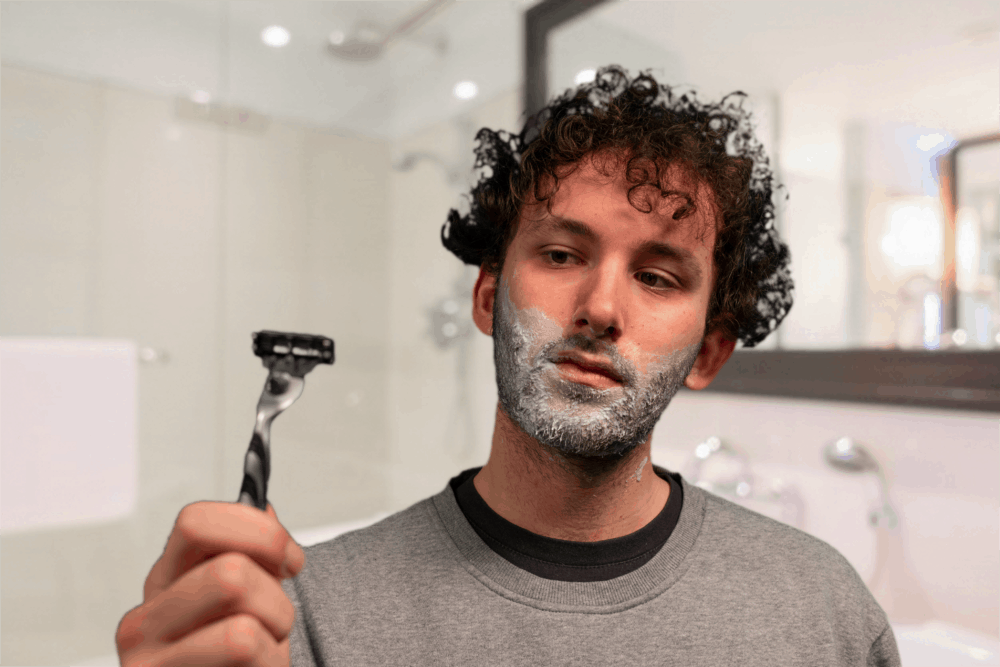
Photo: by Evan Boulogne
Gillette’s latest ad for men to “be the best they can be” was met with much criticism and dislike online. As of this month, it is the 25th most disliked video on the internet (1.24 million thumbs down).
In Gillette’s eyes, what is toxic masculinity? The ad suggests bullying and roughhousing, objectifying and/or harassing women, and mansplaining. Its causes? Dads barbecuing sausages who repeat the mantra of “boys will be boys”, the depiction of men in movies and TV shows, and the terrible role models that young boys have offscreen, too. For Gillette, all attitudes that comply with the above come under fire.
But while Gillette encourages men to be better versions of themselves, they fail to accurately represent toxic masculinity and its positive counterpart with two issues. First is the issue of roughhousing. The other is the lack of a positive model in order to encourage people to end today’s harassment.
Let us start with roughhousing. Roughhousing (or play fighting, as I prefer to call it) is when a child physically wrestles with someone else for mutual enjoyment. In the ad, the scene with roughhousing occurs when the two boys are tumbling around with each other on the grass in front of the barbequing dads. In our society, roughhousing between boys is frowned upon. Growing up, for example, I was not allowed to throw snow at my classmates, let alone playfight. But roughhousing is a must for proper child development.
Neuroscientist and psychobiologist Dr. Jaak Panksepp has shown that roughhousing between juvenile rats develops their prefrontal cortexes. Without it, rats show symptoms of ADHD, which are treatable with Ritalin. As Panksepp wrote in his article, “One reason for the increasing incidence of ADHD may be the diminishing availability of opportunities for pre-school children to engage in natural self-generated social play.” To treat the ADHD of young boys today, we douse them with Ritalin, instead of letting them play!
Roughhousing parameterizes children’s bodies and teaches them how to interact with other people in the most mutually enjoyable and extended time possible. Without it, one becomes awkward and unable to distinguish hurt from surprise, or aggression from boisterousness. It also develops a deep bond between a father (the parent who most often rough-houses) and child.
This is why Gillette’s incautiousness while addressing play fighting is unacceptable. For one, the ad failed to distinguish between roughhousing and bullying. It risks telling men to see all physical contact between boys, playful or not, as harmful. In the ad, the father swoops in and stops the fight. Instead, he should have joined in and played referee. In a society where boy’s playfulness is already under wrap, I disagree with Gillette’s attempt to shame roughhousing.
Rather, it is the lack of a father which is much more likely to be the root cause of “toxic masculinity”. As Jordan B Peterson and Warren Farrell explain, with no father to play with, a child is less likely to develop empathy, or delayed gratification, and thus do well in life.
More pertinently, sons who lack fathers are much more likely to be locked up in prison. There’s no better example of toxic masculinity than criminal behaviour that is harmful to others. A lack of a father at home also predicts a child’s likelihood of being a bully and being a victim of bullying. Otherwise, they learn how to be men from their dorky, risk taking male friends, who know no better. So, it is not only fathers brushing off boys playing with each other that leads to toxic masculinity, but rather fathers being absent in their sons’ lives that does.
Secondly, Gillette’s ad recognizes today’s sexual harassment and the problematic ways in which men treat women. Gillette recognizes this in their ad, when they quote a TV host saying “who’s the daddy”, the man walking out of the store in pursuit of a woman walking past him, and a cocky guy saying “smile sweetie.” Unfortunately, and unlike many other forms of toxic masculinity that Gillette shows in their ad, they failed to provide a solution to this problem. They never showed how men should conduct themselves when they want to attract women. Is asking a woman to go out on a date without much previous contact sexual harassment? What about looking at a woman for more than 5 seconds, recently construed as harassment by corporate policy at Netflix? With Gillette’s criticism of sexual behavior, it seems more like they would prefer no men to good men. They missed a great chance to warm the rather chilled relationship between the two sexes.
It looks like younger consumers increasingly expect advertisers to take positions on social and cultural issues. Gillette did this, and they got plenty of attention for it, even though their ad did not have a single razor in it. It follows then that they should diagnose the issues correctly, and then also suggest constructive solutions to these issues. While Gillette’s ad had 0 razors, it unfortunately reflects their move towards a world permeated by politics and they missed the mark on masculinity’s biggest problems and solutions.
Eugene Fernandes is an opinion writer for the Sundial Press and an exchange student from UBC Okanagan. When he’s not scrolling through twitter or arguing with the person closest to him, Eugene can be found reading, snacking, sleeping, or trying to teach himself something new. His interests include baroque architecture, Jordan Peterson, and mango macarons. Dislikes include Postmodernism and bureaucracy.
What thoughts do you have regarding this issue? Write a response by first contacting the editor, and we will publish your opinion.
Other posts that may interest you:
- Trudeau, the Hypocritical Feminist
- Realistic climate promises are better than broken ones
- How to Win at Tinder
- A New Type of Tea: The Administration Has No Place in Campus Sexual Assaults
- The Price of Excellence for All
Discover more from The Sundial Press
Subscribe to get the latest posts sent to your email.





